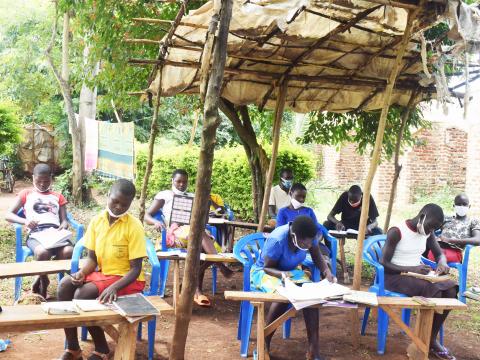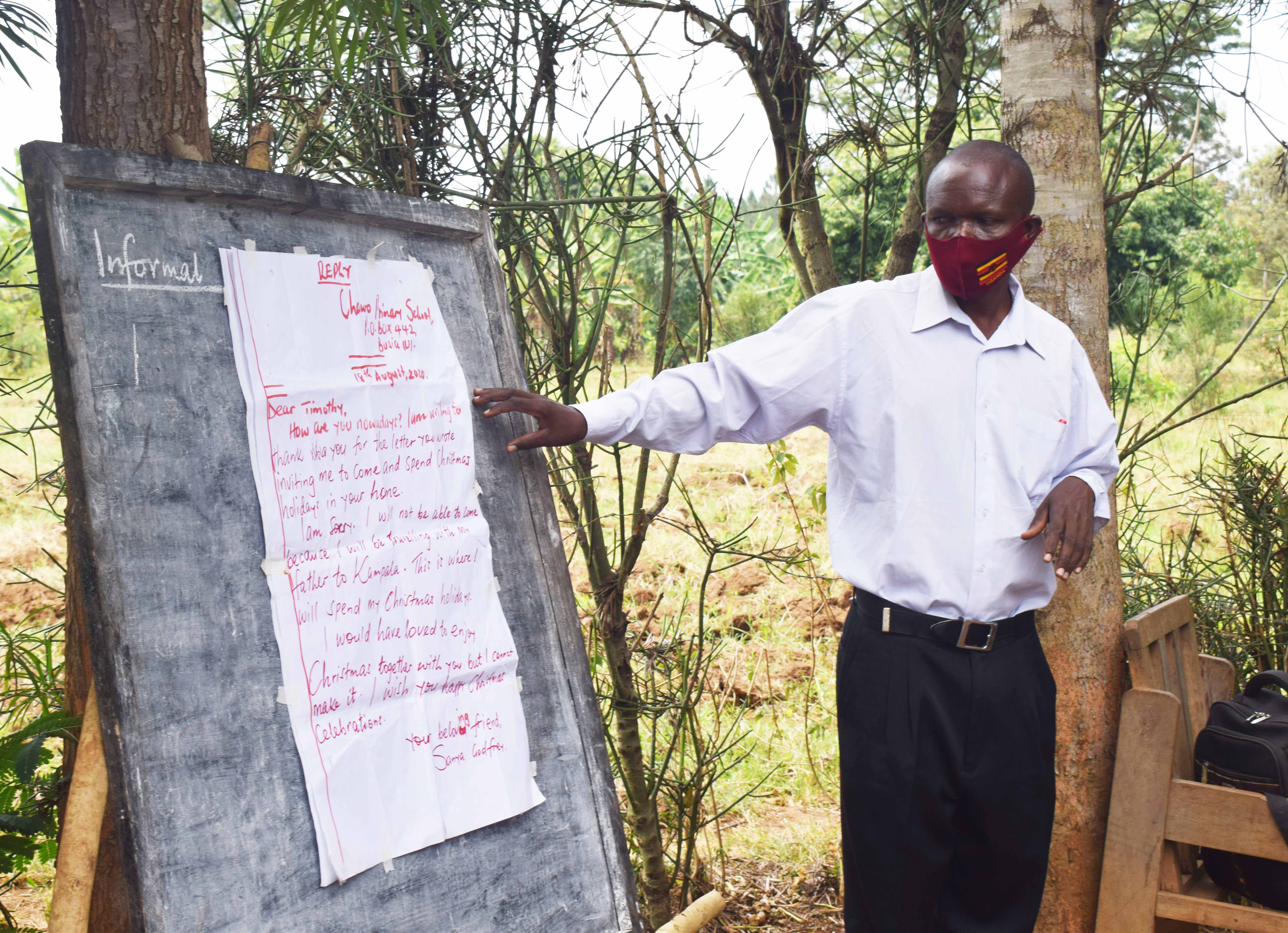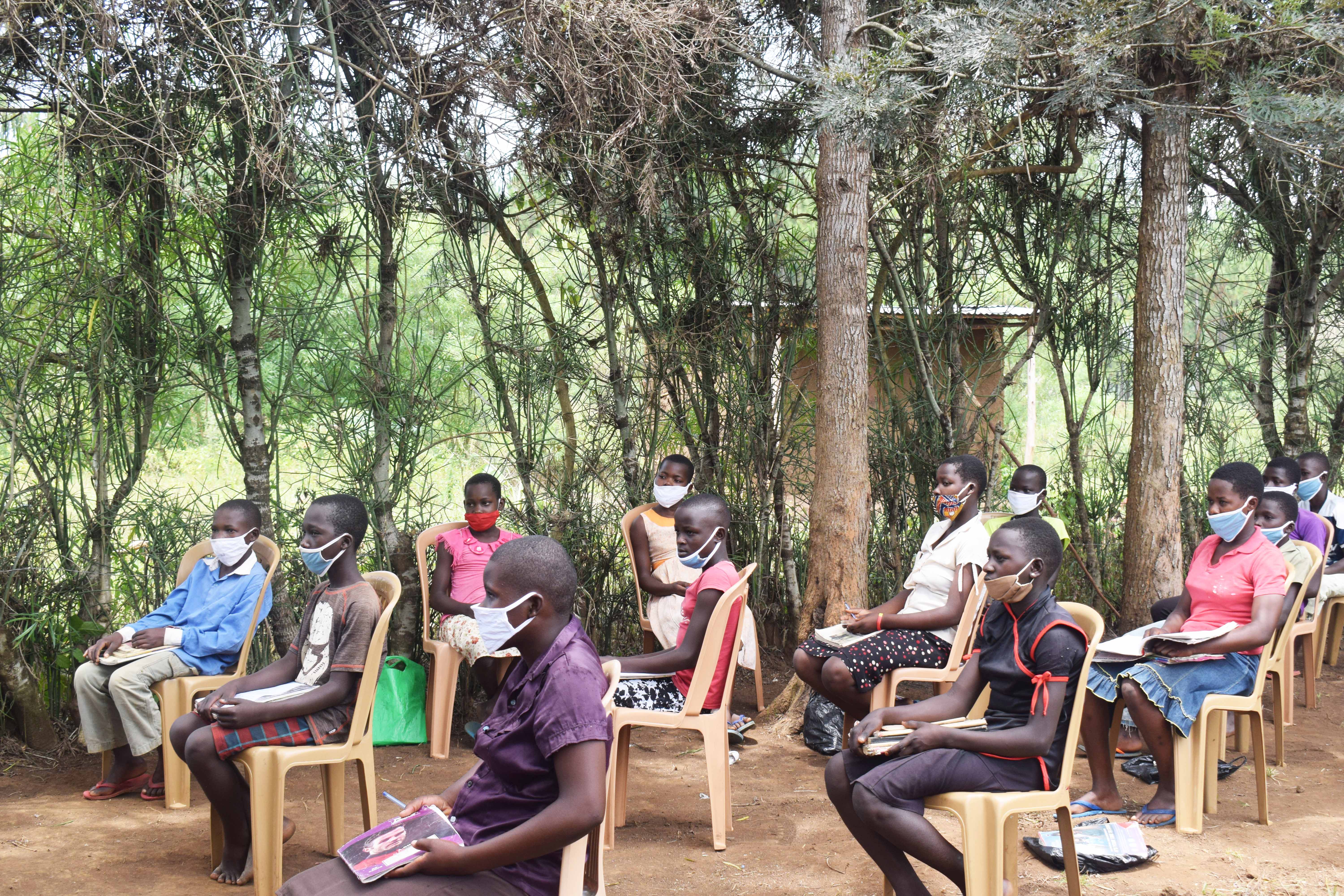Household clustering approach enhances home-based learning

By Simpson Biryabaho & Patrick Oguttu
At the onset of the COVID-19 pandemic, schools were closed and formal teaching stopped. There is also no certainty as to when institutions of learning will be opened up again. The Ministry of Education instituted different learning programmes including televised lessons, radio learning sessions and print revision materials. However, only 1% of people in Busia District have access to television sets, and only 5% to radios.
Since the closure of schools in March 2020, World Vision's Busia programme has registered 83 child abuse and 19 defilement cases within the Busitema Area Programme (programme coverage area). From community meetings held with household cluster leaders and parents, child abuse cases are attributed to children being idle.
Before the pandemic, children would learn basic behavioural traditions along with academics at school. During church services, faith leaders would also speak about child protection and parenting issues. However, with churches now closed, parents are finding difficulty controlling children at home.
Realising the likely impact that such gaps might cause, World Vision's Busia Area Programme (AP) came up with a strategy to deal with the new rising challenges. The AP facilitated the education Trainer of Trainers (TOTs) and community literacy volunteers to move from home to home teaching children during the lockdown.
Initially, there was no coordinated way to mobilise children as learner materials were being distributed, yet the demand from community members became overwhelming. When the Government distributed learner materials through sub-counties, World Vision replicated most of those learner materials to cover the huge gaps as most parents would not afford to photocopy the materials for their children.
“There was a lot of excitement at the beginning because children were happy getting revision materials. However, this wasn’t sustained as over 80% of children would not effectively utilise such materials without aid. We received materials but the Government did not put in place a mechanism to support children revise and utilise them. Some children have never opened the materials and with over 70% of parents being illiterate, the materials were not viewed as useful”, narrates Richard Obuya, a parent and also a reading club facilitator (RCF) in Buchicha, Sikuda sub-county.
A number of children read the materials that they were given, completed the exercise sets but could not get feedback on what they answered. This was common among those whose parents and older siblings didn’t go to school. Learners are also distracted by domestic work and there is laxity within children towards education since some parents are not bothered.
Richard further narrates that he was approached by various parents to help their children in revising the materials: “Initially, I would move to three homes daily and meet children in P3 and P4. At times I would also guide upper primary children though I am not trained to do so. However, I was personally challenged because the materials required technical support from specific subjects' teachers, knowledge on which I did not have. I was determined to ensure children keep the hope of going back to school. As more parents approached me to support their children, the demand got overwhelming and I could not manage alone. I consulted my fellow community volunteers (we are 18 RFCs in Busitema AP currently) and approached World Vision with an idea of reaching children in different classes”.

Nekesa Barbara, a Reading Club facilitator at Nkanjo literacy centre in Busitema sub-county also shares the same sentiments: “I would only afford to guide P1 to P4 learners but they didn’t receive adequate materials. World Vision supported more of upper primary but I am not trained adequately to support upper primary. It has been very tough to turn away learners who come to me for support on materials given by the Government. I spoke to my fellow volunteers and we agreed to use the household clusters established by World Vision, in mapping out all the learners from P5 to P7 in our villages. The children do their work at Literacy Centres where they can afford to social distance. After every month, we do an assessment and evaluate their performance. Every household cluster lead keeps a record of the performance such that when schools open, children can also be evaluated. We hope to secure new sets of revision materials from the Government since a number of parents don’t have enough resources to acquire such materials”.
Mindful of the COVID-19 Standard Operating Procedures (SOPs), household cluster TOTs were sensitised and agreed to mobilise children and teachers within each cluster per class. Having mapped out the children according to their grades, teachers within such communities were mobilised to support those children as a contribution towards learning. Volunteers also allocated venues for learning in the various household clusters. Each learning site was allocated 15 children at most, along with 68 teachers who would guide the learners in shifts. The RCFs also collaborated with the Government to distribute materials and came up with a revision schedule that encompasses all subjects.
World Vision provided RCFs training materials like flip charts, markers and masking tape. Parents and communities have also contributed greatly to the home-based learning programme which has led to increased enrolment, explains George Sanya, the chairman head-teachers Association, Busia North (Busitema, Sikuda, and Buteba sub-counties).
The sessions happen three times a week between Monday and Friday, from 10:00 am to 2:00 pm (Busitema) and 2:00 – 5:00 pm (Sikuda). Two subjects are taught per day according to the timetable. Learners and teachers register lesson attendance. A monitoring team was established and moves to all clusters to check the content delivered by teachers, review pupils' work –especially continuous assessment and the learning environment around the centre. The assessors also verify evidence of enrolment in relation to reports submitted weekly. World Vision has developed a tracking register for children’s daily attendance such that they can assess consistency. In the end, children will be assessed using a set of questions developed centrally by the instructors (teachers).
The assessment will cover work completed at school and what they have covered during the COVID-19 pandemic and results will be shared with parents and other stakeholders. It will also be used to assess the impact of the home-based learning approach on the education of children during the pandemic.

Achievements
- From the 636 (236 girls and 130 boys) learners on 27th July 2020 in Busitema and Sikuda sub-counties, the home-based learning approach currently has an enrolment of 1,203 (740 girls and 463 boys) learners after four weeks by 22nd August 2020. Children have therefore continuously studied and will be ready to continue school.
- A high number of girls participating owing to adequate sensitisation and emphasis on girl-child education.
- Joint planning and lesson scheming by the teachers with the guidance of assessors and Centre Coordinating Tutor (CCT) in line with the Government material provided which harmonise lessons taught.
- Positive response and support by the local leadership, especially Local Council (LC)Is and LCIIIs, who mobilise parents and children to ensure every child has a mask. One LCI chairperson in Sikuda sub-county bought and supported 20 learners with masks. The LCs also monitor the centres on a daily basis.
- The parents mobilised and provided portable chalkboards (42 boards to date).
- At every centre, there are appropriate hand-washing facilities and parents provide soap and other detergents as requirements in line with Ministry of Health COVID-19 guidelines.
- Continuous reflections is done by the community and teachers where World Vision is only invited to attend and witness or give guidance.
- The planning process for the approach included actors across the various technical realms including Child Protection Committees (CPCs) who ensure children's safety, and School Management Committees that motivate parents and teachers.
- Increased protection of children from all forms of abuses with such joint efforts by various actors.
- The approach is fully implemented at household cluster level.